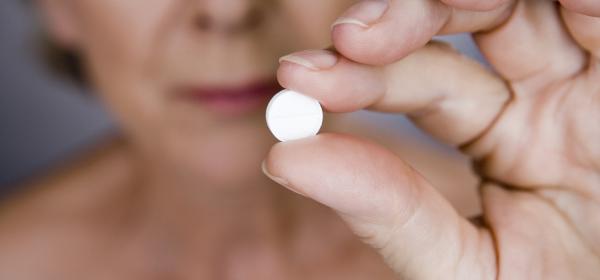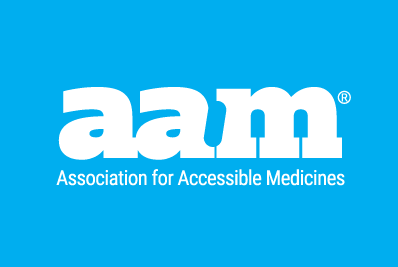Congress should preserve – not limit – 180-day generic exclusivity
Before the enactment of the landmark Hatch-Waxman Amendments in 1984,1 FDA generally required generic drug manufacturers to conduct human clinical trials and submit full marketing applications to obtain approval. Those requirements made it cost-prohibitive to develop lower-cost generic versions of previously approved brand drugs. Congress designed Hatch-Waxman to remove those barriers, increase the availability of generics, and decrease drug spending by stimulating generic competition.
Hatch-Waxman provides generic manufacturers with the ability to seek approval of an Abbreviated New Drug Application (ANDA) while challenging brand drug patents. If such a challenge is successful, then a high-quality, lower-cost generic drug can enter the market years before it otherwise would be able to because of lengthy patent terms. But challenging brand drug patents is a costly and risky endeavor. Recognizing this, Congress created an incentive: eligibility for a period of 180-day exclusivity for generic manufacturers that are the first to challenge brand patents (a/k/a first applicants or first-to-file).
For 35 years, the 180-day exclusivity incentive has worked to deliver generics to patients well before brand patents expire. When Hatch-Waxman was enacted, generic medicines accounted for 18% of all prescriptions. Now, thirty-five years later, generic medicines comprise 90% of all prescriptions dispensed in the U.S. And this level of competition is why patients and the health care system saved more than $338 billion from generics in 2020.2
Proposals that would weaken the 180-day exclusivity incentive would result in fewer patent challenges and delayed access to lower-cost medicines. Congress should refrain from imposing any changes to the 180-day incentive for first-to-file generic developers.
The Problem: Patent & Regulatory Barriers
First applicants carry the burden and significant expense of challenging brand patents. When successful, these generic developers blaze a path not only to approval of the first generic, but also for subsequent generic competition.
Patents are an important catalyst for innovation when used properly. However, brand companies frequently obtain many weak, non-innovative patents to ward off competition. This acts as a barrier to competition and increases the risks for generic developers.
A patent case may cost each party $1.5 million in legal fees and one study found estimated costs of $10 million per suit.3 If a brand company has 72 patents covering a drug, the generic company must find a way to invalidate or design around all 72 patents. Drug patent disputes can also be lengthy, with the duration typically exceeding three years.
In contrast, a brand company is able to obtain a patent for about $25,000 and only needs to be successful once (1 for 72) to keep a generic off the market. The entire purpose of developing patent estates around brand drugs is to dissuade generic competition.
The Solution: 180-Day Exclusivity
The key to breaking up unwarranted brand monopolies – and thereby lowering prices and increasing access – is ensuring generic developers have adequate incentives to challenge brand patents. For the past 35 years, current law has offered generic companies a “brass ring”: The first manufacturer to challenge a brand patent is eligible for a short window during which its product is the only generic on the market.
The mechanics of 180-day exclusivity are relatively straightforward. Brand-name companies list certain patents in the Orange Book, the FDA’s publication of Approved Drug Products with Therapeutic Equivalence Evaluations, and ANDA applicants must make one of the following certifications:
- Paragraph I Certification: that no patent information was filed for the brand;
- Paragraph II Certification: that the listed patent already expired;
- Paragraph III Certification: that the proposed generic drug will not be marketed before the listed patent’s expiration date; or
- Paragraph IV Certification: that the listed patent is invalid or will not be infringed by the manufacture, use, or sale of the proposed generic drug.
The first applicant that blazes the trail by submitting a substantially complete application that contains a Paragraph IV certification, is eligible for an exclusivity that precludes subsequent applicants from obtaining final approval until 180 days after the first applicant commercially launches. To obtain this incentive, first applicants devote substantial resources to get applications to FDA quickly. Patients benefit from generics expediting development in the hope of being a first applicant.
The Benefit: Increased Savings and Patient Access
Where first applicants succeed, it opens the floodgates for competition. First generics—many of which come to market through Paragraph IV challenges—reduce drug costs by 39 percent according to the FDA. As more generic competitors enter the market after a Paragraph IV challenge, costs decline even further. FDA data shows that once six generics are available, price reductions often exceed 95 percent.4 First generics that come to market through Paragraph IV challenges are therefore critical to public health and significantly increase patient access to treatments. In 2020, generic medicines that were launched with 180 days of exclusivity saved the health care system nearly $20 billion.5
The Threat: Weakening Incentives to Challenge Brand Patents
In recent years, FDA budget requests and legislation introduced in Congress have proposed changes to the 180-day incentive for first-to-file generic developers in various ways.6 While intended to spur greater competition, these proposals would have the opposite effect.
The importance of 180-day exclusivity cannot be overstated. Because it is the only incentive for generic companies to challenge brand patents, it is perhaps the most significant driver of competition – and lower prices – within the pharmaceutical industry. Generic developers have come to rely upon the 180-day incentive for more than 35 years. Consequently, policy changes that decrease the value of 180-day exclusivity or make it less predictable will also weaken incentives to challenge brand patents. If fewer generic companies take on these significant risks and expenses, fewer high-priced brand drugs will face generic competition. Congress should thus refrain from imposing any changes to the 180-day incentive.7
No Parking Here
Recently proposed changes to the Hatch-Waxman Act’s statutory framework are therefore unlikely to substantially improve generic availability … In addition, such changes risk upsetting existing incentives for generic manufacturers to bring Paragraph IV challenges in the first place by increasing uncertainty with respect to the ability to obtain or retain exclusivity and the extent to which the exclusivity period will be shared.
Kesselheim et al, Yale Journal of Health Policy, Law and Ethics
References
- Drug Price Competition and Patent Term Restoration Act of 1984
- AAM, The U.S. Generic & Biosimilar Medicines Savings Report, October 2021 (link).
- Supreme Court of the United States, FTC v. Actavis Opinion, June 2013 (link).
- FDA, Generic Competition and Drug Prices: New Evidence Linking Greater Generic Competition and Lower Generic Drug Prices, December 2019 (link).
- AAM analysis of IQVIA December 2019 National Sales Perspectives data.
- FDA, Executive Summary of FY 2023 Legislative Proposals (link); BLOCKING Act (H.R. 2853) (link).
- Victor Van de Wiele, Jonathan Darrow & Aaron Kesselheim, No Parking Here, Yale Journal of Health Policy, 2021 (link).

